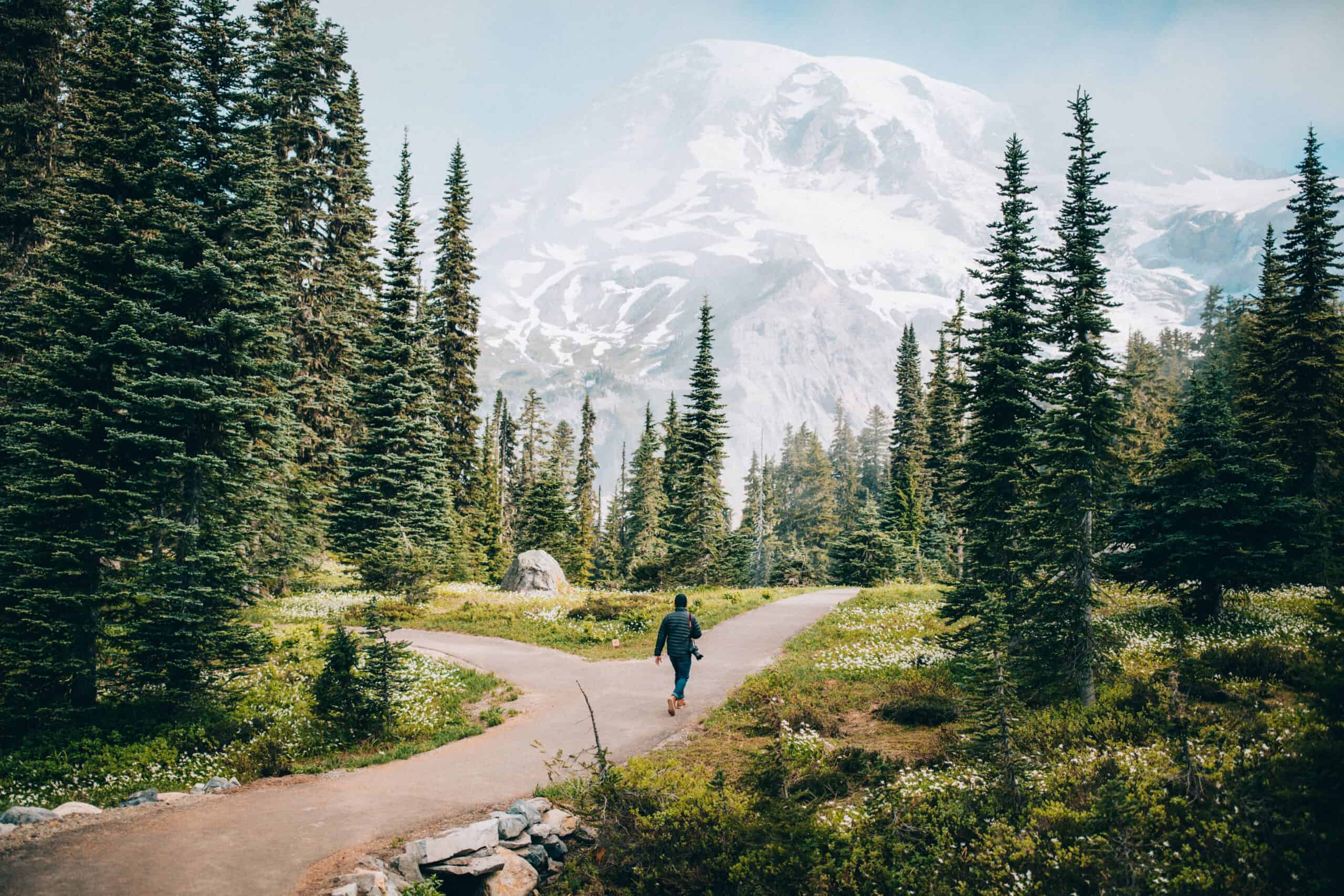Because of its stunning views of the Pacific Northwest, tons of epic outdoor adventure opportunities, and being one of two “14ers” in the state of Washington (the other being its sub-peak, Liberty Cap), Mount Rainier National Park is a special place for many Washingtonians and visitors alike.
Berty and I call Washington home, and we are so lucky to have this park just a few hours drive from home!
If you’re creating a complete Mount Rainier itinerary, keep reading to learn all about the best things to do in Mount Rainier National Park!
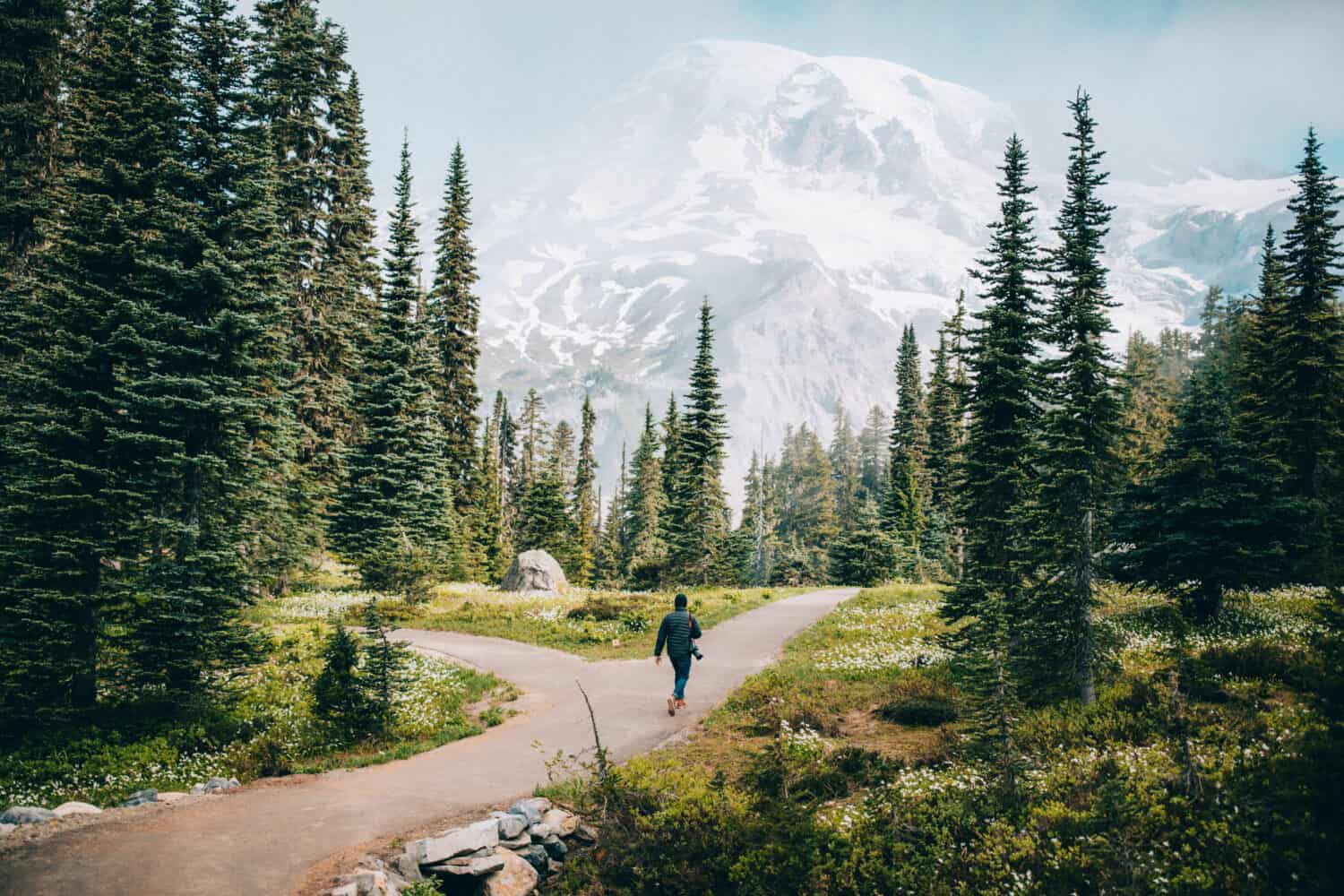
The Best Things To Do In Mount Rainier National Park
- The Best Things To Do In Mount Rainier National Park
- Things To Know Before You Go
- Mount Rainier Entrance Fees
- How To Get Around Mount Rainier National Park
- The Best Time To Visit Mount Rainier
- Things To Do In Mount Rainier National Park
- 1. Wander The Easy Nisqually Vista Loop
- 2. Capture the Sunrise at Reflection Lakes
- 3. Explore the White River (Sunrise) Area
- 4. Hike To Mt. Fremont Lookout Tower
- 5. Wake up for Sunrise…at Sunrise!
- 6. Take The Skyline Trail Hike
- 7. Find Mount Rainier Waterfalls
- 8. Have a Picnic at Tipsoo Lake
- 9. Learn About History at Longmire
- 10. See The Wildflowers During Peak Season
- 11. Hike the Wonderland Trail
- 12. Spend Your Morning in Paradise
- 13. Wander The Grove of the Patriarchs
- 14. Capture Pictures on the Sourdough Ridge Trail
- 15. Venture out to Pinnacle Peak Trail
- 16. Spot Wildlife In The Park
- 17. Hike To Tolmie Peak Lookout
- 18. Enjoy the Historic Paradise Inn
- 19. Go Stargazing at Night
- 20. Summit Mount Rainier
- Where to Stay in Mount Rainier National Park
- Mount Rainier FAQs
- The Best Things To Do At Mount Rainier National Park (Overview)
- More PNW Adventures
Things To Know Before You Go
History of Mount Rainier National Park
Originally Indigenous land, Mount Rainier has gone by many names–primarily “Tahoma”, “Takhoma”, and “Ta-co-bet,” some of which translate to ‘mother of all waters.”
It’s important to note that Mount Rainier National Park has been the ancestral homeland of the Cowlitz, Muckleshoot, Nisqually, Puyallup, Squaxin Island, Yakima, and Coast Salish people, since time immemorial. We honor each of these nation’s traditions of this land.
After the arrival of explorers and settlers in the Pacific Northwest, Mount Rainier National Park was established as a national park in 1899 and became the nation’s fifth national park!
Today, scientists, researchers, explorers, hikers, tourists, and outdoor adventurers enjoy this little corner of the Pacific Northwest.
Mount Rainier Entrances
There are 4 entrances to the park: Carbon River Entrance, White River Entrance (Sunrise), Nisqually Entrance (which includes Paradise and Longmire) and Stevens Canyon Entrance (Ohanapecosh).
Paradise and Sunrise are the most popular sections of the park. These areas host some of the most popular hikes in Mount Rainier, like the Skyline Trail and Naches Peak Loop Trail.
Longmire is the historic area of the park, Ohanapecosh is the ancient forest area of Rainier (no views but lots of big trees!). Carbon River is the quietest area of the park, with
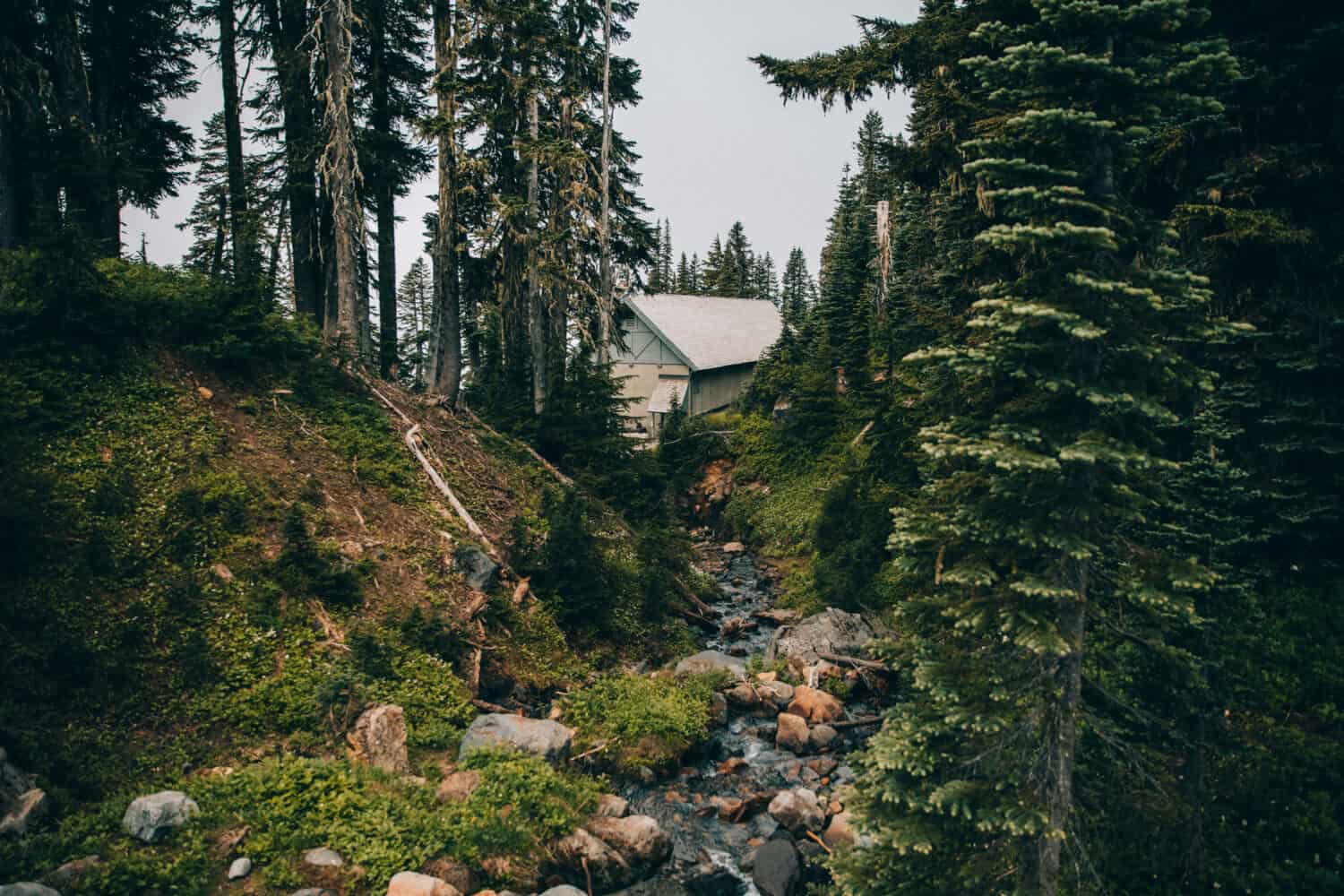
Mount Rainier Entrance Fees
Because it’s a national park, there are entrance fees to get into Mount Rainier National Park.
If you don’t have an American the Beautiful Pass ($80), you can purchase an entrance fee into Mount Rainier National Park for a single car ($30), per person/walk-up/bicycle ($15 per person), or motorcycle ($25).
Heads up: US citizens with permanent disabilities may receive a free Access Pass into US national parks by application with documentation of permanent disability and citizenship (can order online or get at a providing location).
The regular entrance fee grants unlimited access into Mount Rainier National Park for seven consecutive days!
You can pay the entrance fee to Mount Rainier National Park online at Recreation.gov (printed pass required for entry, then leave on the dashboard of your car) or any of the main entrances to the park.
Bummed about the price? The good news is that there are fee-free days! These are:
- January 16: Birthday of Martin Luther King, Jr.
- April 22: First day of National Park Week
- August 4: Anniversary of the Great American Outdoors Act
- September 23: National Public Lands Day
- November 11: Veterans Day
When camping in Mount Rainier National Park, camping fees are also paid when you enter the park for $20 per site, nightly and $60 for large groups, 25-40 people.
Cell Service
There is varied cell coverage throughout Mount Rainier National Park, depending on what cell service you use.
There are many places in the park where cell coverage is available, but much of the park has limited service, so don’t count on it!
Because of this, it’s important to be prepared for all kinds of situations that may occur while being out of reach of others and bring a radio or map for extra assurance.
For more information about cell service and free hotspots in Mount Rainier National Park, check out this guide.
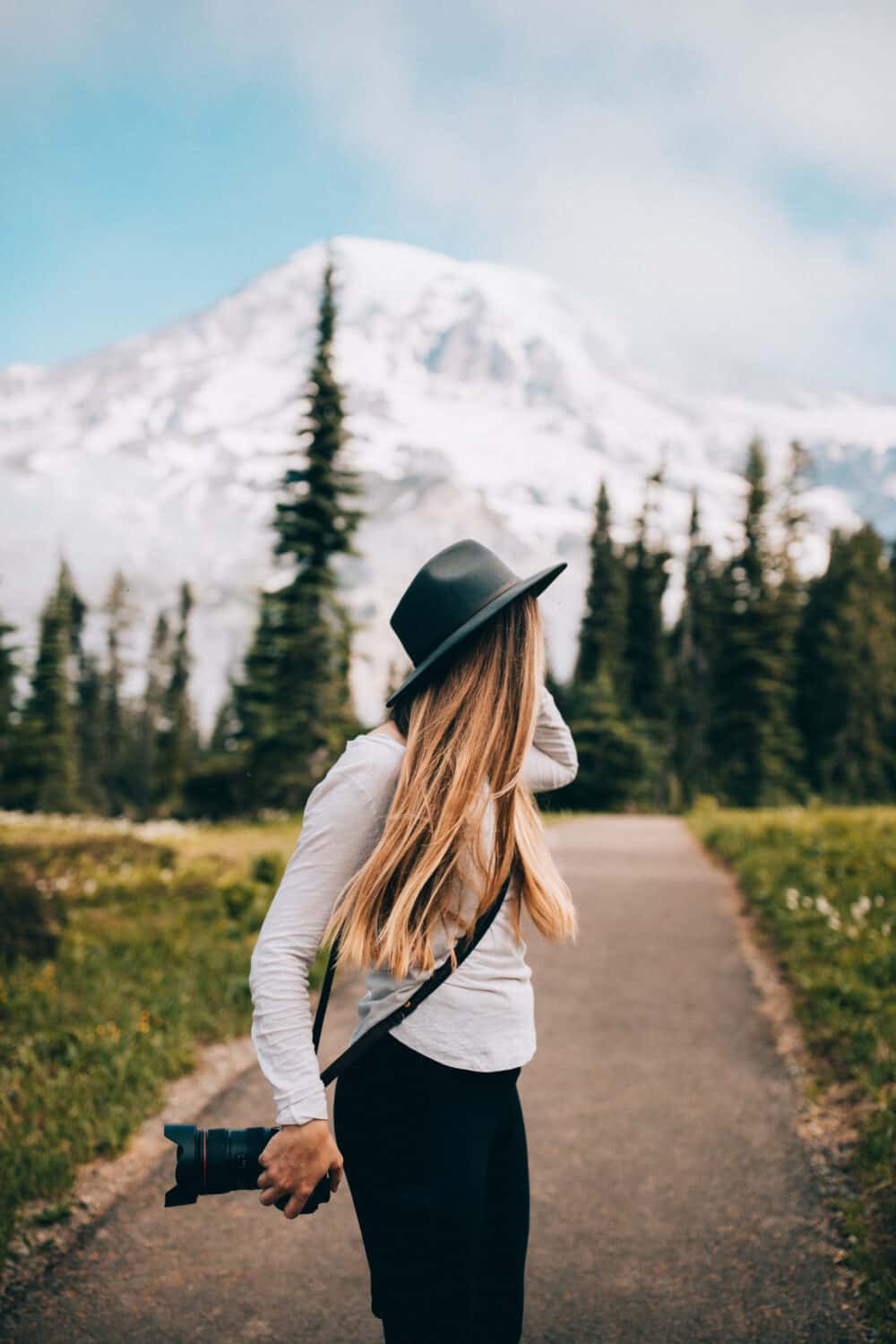
Mount Rainier Packing List
During your Mount Rainier day trip, it’s important to pack the right gear and be prepared for all kinds of weather and situations that may happen while in the mountains.
Here are some of our top suggestions for what to pack when spending one day in Mt. Rainier National Park:
Bugspray: Rule of thumb: If the bear grass is out, the bugs are out! It’s vitally important that you pack bug spray. The mosquitos can be savage in the summer season.
Sunscreen: It’s important to bring sunscreen because of the higher elevation and reflective snow. Remember–you can still get sunburnt on a cloudy day, especially when the UV index is high!
Sunglasses: On sunny days, sunglasses are essential for making the entire day enjoyable.
Layers: Bring lots of layers. You can never quite know what you’re gonna get. We suggest wearing a breathable base layer, sweater, and an insulating jacket, so you can take off or put on layers throughout the day.
Map: Paper or digital! There are lots of trail systems within the park and stops in Mount Rainier National Park that you won’t want to miss! Tip: use the NPS app to navigate US national parks!
Water: While there are spots in the park to refill your water, always bring enough water for a full day trip. The general rule of thumb is to bring 0.5 liters for every one hour of hiking.
Snacks: Don’t forget snacks! Some of our favorite (and unique!) trail/day trip snacks include trail mix, protein bars, fresh fruits and veggies, homemade energy balls, and charcuterie boards.
Fanny Pack: Try a fanny pack for ease of use! There are tons of designs and options out there, so here’s our guide to the best fanny packs for hiking, style, outdoor adventures, and general use.
Hiking Boots: While in the Pacific Northwest, hiking boots are essential. Check out our suggestions of the best hiking boots for hitting PNW trails here!
Camera: To capture all your favorite moments while in Mount Rainier National Park, don’t forget your film camera, Paper Shoot (an extremely portable camera!) instant camera, or smartphone!
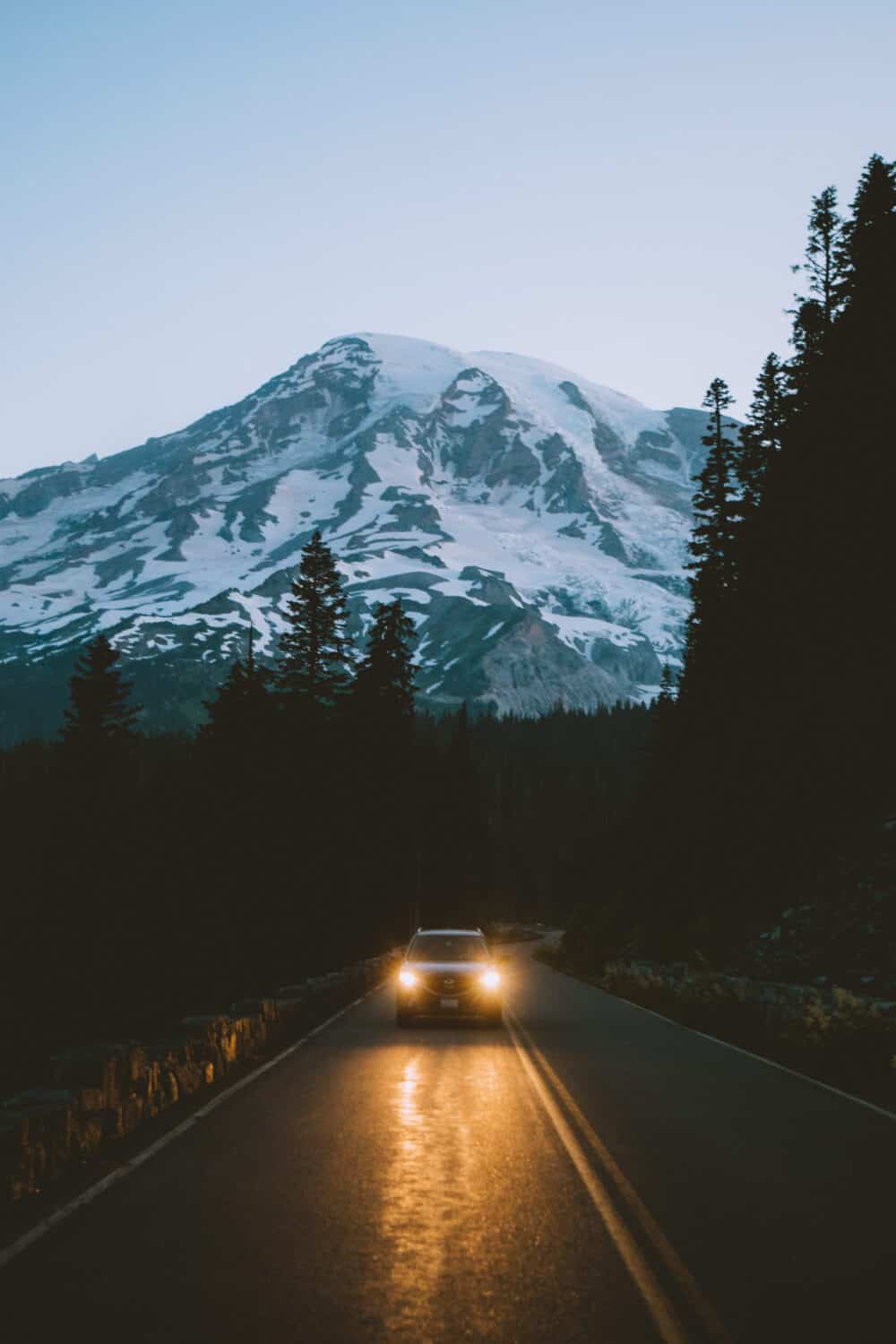
How To Get Around Mount Rainier National Park
Getting around Mount Rainier National Park is fairly easy and straightforward. However, you’ll want to make sure you have a full tank of gas before entering the park. There are no gas stations within the park borders of Mount Rainier National Park!
If you are coming during shoulder season, make sure to check up on road conditions before you leave. They can change really quickly, but the website is also very good about updating quickly. Even quicker, check their Twitter account for very quick updates!
Because of the bottleneck entrances, the park can get extremely full during busy seasons. Parking lots commonly overflow by 8am, and it’s not uncommon to wait in line for 1-2 hours to get in.
If you want to avoid crowds, try coming before 8am. It’s not always possible to find a quiet spot in the park during summer, but there are ways to mitigate the crowding!
Hot Tip: Come before sunrise! The park has some of the most scenic road trip routes in Washington, and getting in before the sunrise guarantees less crowds and lots of time for pictures!
Closest Airport – Directions to Mount Rainier
The closest airport to Mount Rainier National Park is the Sea-Tac Airport, which is just 1 hour and 35-minute drive from the Nisqually entrance into the park. That makes it one of the coolest and convenient day trips from Seattle!
From the airport, you can rent a car and drive on your own or book a transfer service from the Sea-Tac Airport to Mount Rainier National Park through Shuttle Express (this is a great option for large groups!).
You could also meet up with an organized, group day-trip tour of Mount Rainier National Park that starts in Seattle and picks up passengers at designated locations throughout the city ($174 per person).
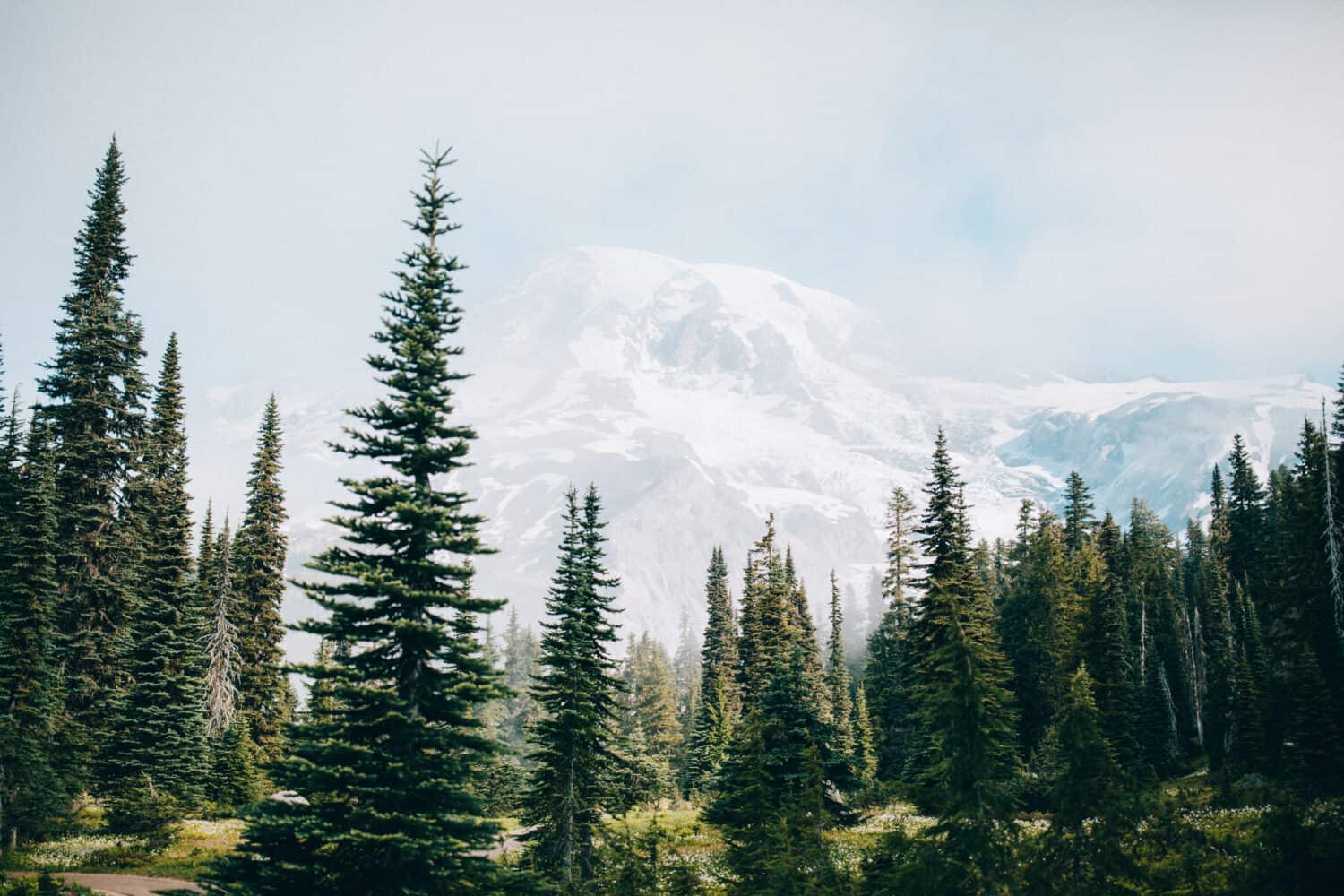
The Best Time To Visit Mount Rainier
If you want to check out the hiking trails, you have just a few short months to do so! The park is generally snow-free between mid-July and mid-October. These are the best times to check those epic Washington hiking trails off your bucket list!
If you are planning to come to see wildflowers, it’s best to come later-July to August. This is when the blooms are at their best!
In the winter is when you can enjoy some of the best snowshoeing and winter hikes in Washington. Snow can really affect entry to the park, though. Make sure to follow the park on Twitter, they are really good about letting you know the road conditions!
Things To Do In Mount Rainier National Park
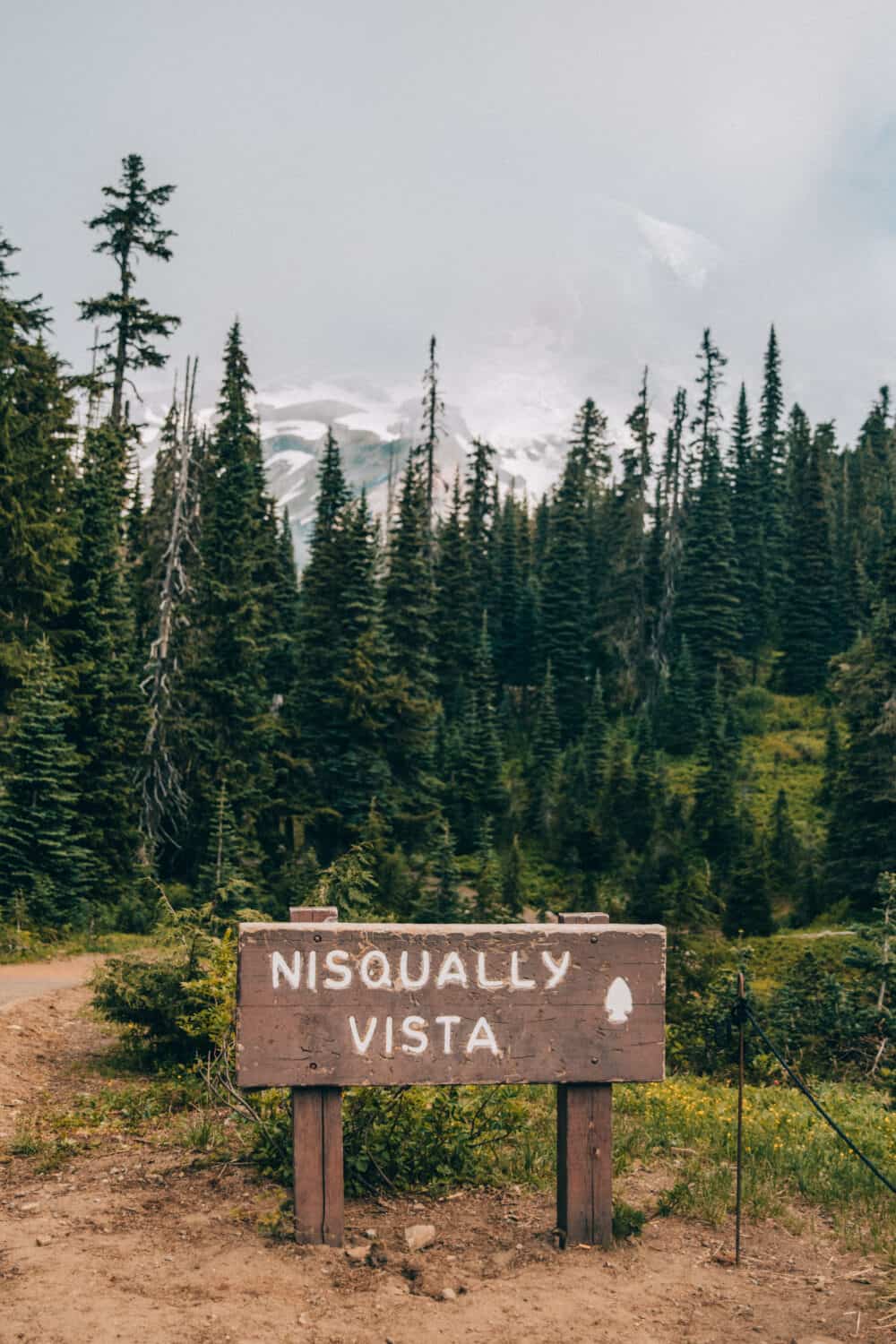

1. Wander The Easy Nisqually Vista Loop
The Nisqually Vista Loop in Mount Rainier National Park is one of the easiest trails in the area (1.1 miles with 200 feet elevation gain) that also has stunning views of the mountain and PNW!
While on this hike, you’ll get epic views of Mount Rainier’s Nisqually River valley and the Nisqually Glacier.
You can find the trailhead for the Nisqually Vista Loop at the lower parking lot of Mount Rainier’s Paradise Area. You’ll find a sign for the trailhead at the western end of the parking lot.
2. Capture the Sunrise at Reflection Lakes
One of the most popular things to do in Mount Rainier National Park (especially for photographers) is to capture the sunrise on Reflection Lakes.
When open during the summer seasons (June-September), Reflection Lakes offers visitors with stunning views of Mount Rainier reflecting off of the water and the surrounding delicate, subalpine meadows.
If you want to combine seeing the Reflection Lakes with a hike, try the 2.5-mile Pinnacle Peak Trail or the longer, 93-mile Wonderland Trail (permits required!)!
3. Explore the White River (Sunrise) Area
Mount Rainier National Park can get pretty busy in its peak season, so if you’re looking to escape the crowd, check out White River (Sunrise) Area for a quieter place in the park that still gets beautiful views of the mountain.
In the White River (Sunrise) Area, the Glacier Basin Trail (moderate, 6.5 miles with 1,600 feet elevation gain), or the Emmons Moraine Trail (moderate, 4.1 miles with 431 feet elevation gain) are well-known hikes that wind through the unique landscape around Mount Rainier.
From both of these hikes, you can expect to get epic views of Mount Rainier’s many glaciers, river valleys, lakes, and wildlife!
4. Hike To Mt. Fremont Lookout Tower
The Mt. Fremont Lookout Trail is easily one of the most iconic hikes in Mount Rainier National Park.
For frozen lake views in the winter and spring, sightings of mountain goats, and stunning views of Mount Rainier National Park, hike the 5.6-mile round trip trek with 1,200 feet elevation gain on the Mt. Fremont Lookout Trail!
There is very little shade on the Mt. Fremont Lookout Trail, so come prepared!
The Mt. Fremont Lookout Trail is also very popular, especially on the weekends, so plan to hike during the week if you’re hoping for more solitude while in Mount Rainier National Park.
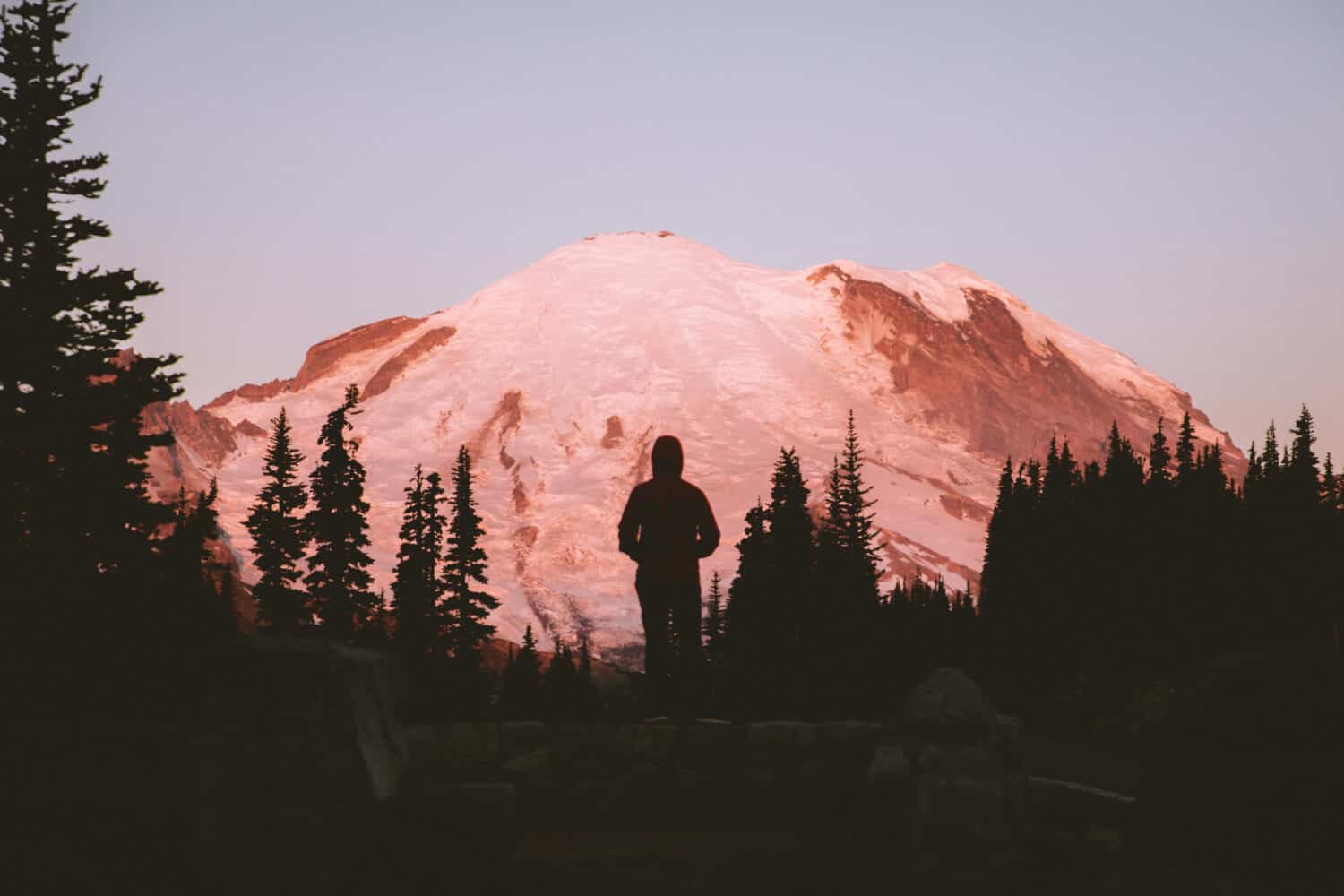
5. Wake up for Sunrise…at Sunrise!
The early bird catches the worm!
For an epic day in Mount Rainier National Park, wake up early and drive up to the Sunrise Area on the mountain for a sunrise like no other!
What makes this location unique on Mount Rainier is that it’s the first spot that lights up as the sun rises, being on the east side of the park.
This is the highest elevation point that you can reach with your car (6,400 feet), and it’s definitely worth the early morning.

6. Take The Skyline Trail Hike
Another famous Mount Rainier hike is the Skyline Trail–a 5.5-mile round trip trek with 1,700 feet elevation gain!
While on the Skyline Trail, you’ll first climb around 2 miles to reach Panorama Point (where there’s a toilet!), hike along the High Skyline Trail to avoid dangerous, icy slopes, connect back with the Skyline Trail and continue on for a few miles to descend into the Paradise Valley, then make it back to Paradise.
If you happen to be hiking the Skyline Trail on a clear day, you can see as far south as Mount Hood in Oregon!
The Skyline Trail is found near the Jackson Visitor Center at Paradise in Mount Rainier National Park.
Read More: 22 Adventurous Weekend Trips from Portland, Oregon
7. Find Mount Rainier Waterfalls
Due to ideal mountain conditions, Mount Rainier National Park hosts some of the best Washington waterfalls that you can see for yourself!
We suggest visiting Myrtle Falls, Narada Falls (the tallest waterfall on Mount Rainier at 188 feet!), and Comet and Christine Falls in the Longmire area (the most easily accessible waterfall in the park)–all of which are in the Paradise Area.
Sunbeam Falls is another epic waterfall near the Reflection Lakes, and it’s not very well known, making it the perfect place to stop for a moment while driving around the busy park.
To find Sunbeam Falls in Mount Rainier National Park, drive along Stevens Canyon Road between Paradise and the southeastern entrance of the park. Sunbeam Falls is located near the Bench Lake Trailhead (above Louise Lake) and can be seen from the road. Just look out for the “Sunbeam Creek” sign and you’re near this stunning waterfall!
8. Have a Picnic at Tipsoo Lake
One of the simplest ways to enjoy the Pacific Northwest scenery in Mount Rainier National Park is by having a picnic!
Tipsoo Lake is the perfect mid-day stop while in the park, as it’s located between the Paradise and Sunrise area of the park.
At Tipsoo Lake, you can hike the short loop around the lake, discover the wonders of the lake with the kids (Tipsoo Lake is one of the best places to spot tadpoles and frogs in the park!), or use it as a starting point for the famous Naches Peak Loop Trail (3.4 miles).
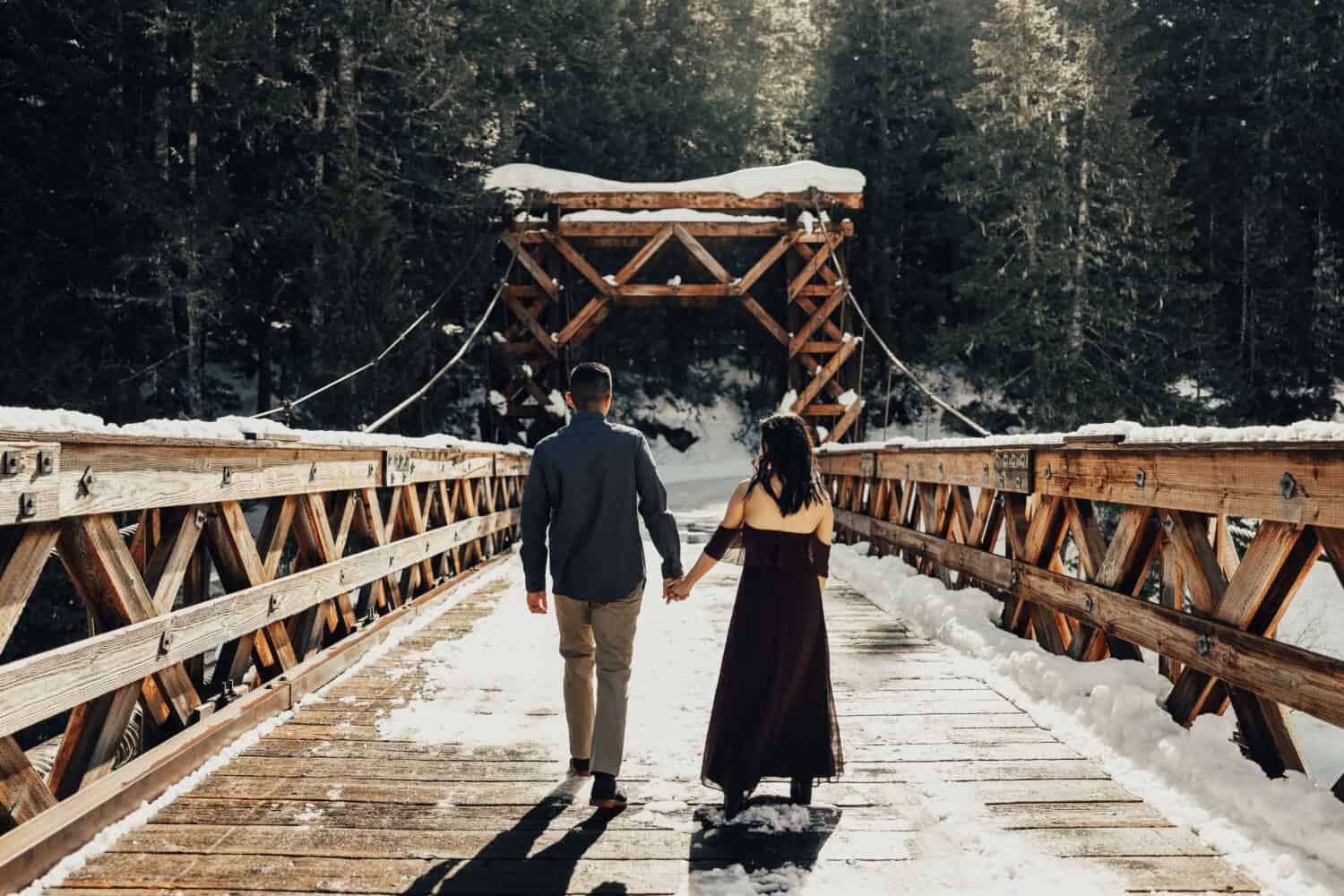
9. Learn About History at Longmire
For those who want to learn more about the history of Mount Rainier National Park, grab a souvenir to commemorate your trip, or have a mid-day picnic, check out the Longmire Museum!
The Longmire Museum is usually open daily, year-round, and the nearby Wilderness Information Center, where you can get wilderness permits and hiking/backpacking information, is open daily from late May-early October.
After learning about the park at the Longmire Museum, hike the Trail of the Shadows (easy, 0.7 miles), which ends at a rock-ringed thermal pool called Soda Springs!
Because it’s lower in elevation, the area around the Longmire Museum and Trail of the Shadows is dense with western hemlock, douglas fir, ferns, moss, and other PNW foliage.
Read More: The 12 Best Ways To Volunteer in Washington (Outdoor Edition)
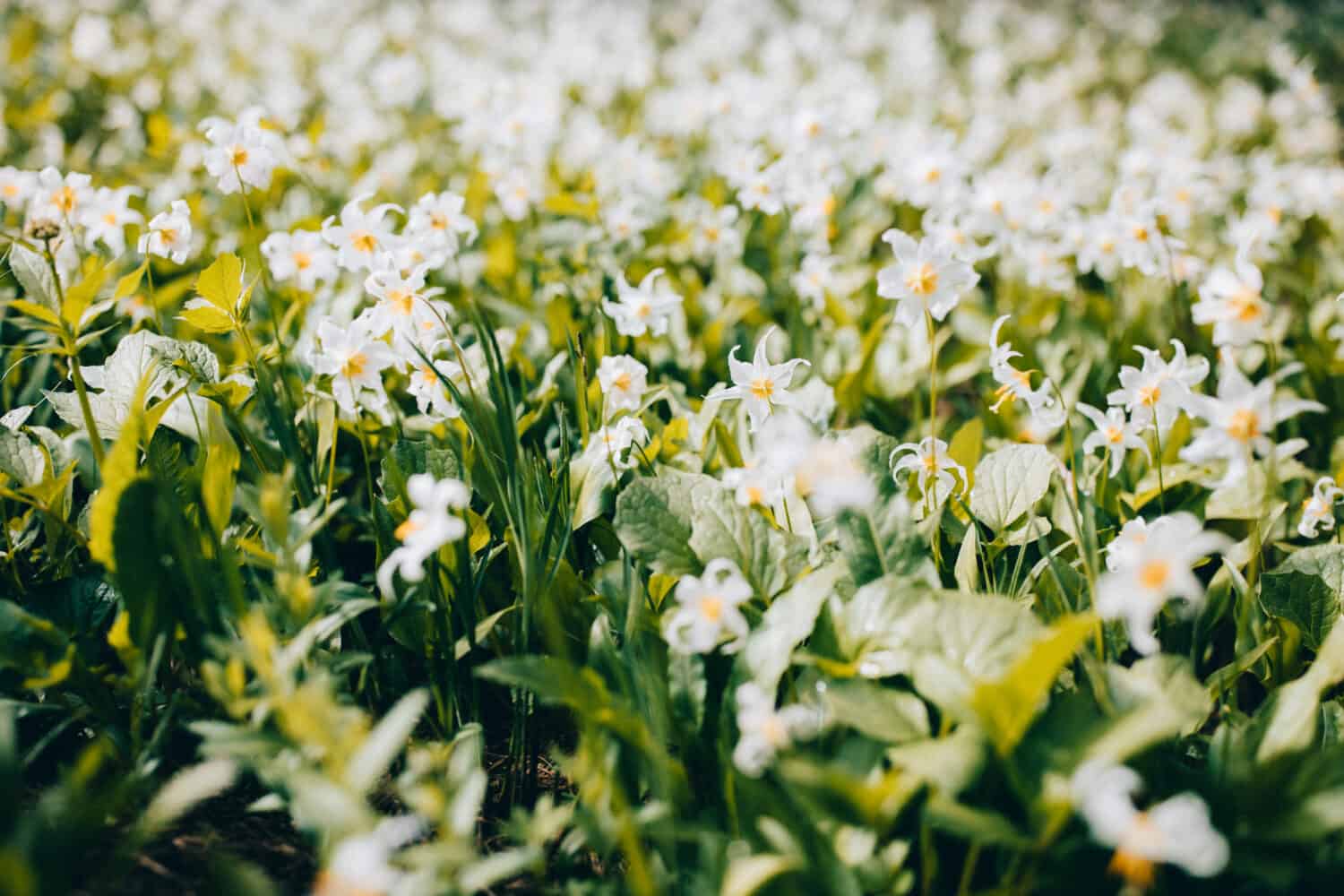
10. See The Wildflowers During Peak Season
One of the simplest ways you can enjoy Mount Rainier National Park is by visiting when the wildflowers are in their peak season!
The best time to see wildflowers in Mount Rainier is late July to August. Some of the best places in the park to see them are at Chinook Pass and Tipsoo Lake.
Here, you’ll see Alpine Aster, Bleeding Heart, Cascade Azalea, Beargrass, Bellflower, Bog Orchid, and more!
Warning: Do NOT STEP on the flowers–stay on path! The wildflowers in this area are extremely fragile and it’s important to protect them by staying on the trail.
11. Hike the Wonderland Trail
The Wonderland Trail is one of those bucket list through-hikes that’s practically on every dirt-baggers bucket list. This makes it one of the best things to do in Mount Rainier National Park!
The Wonderland Trail is 93 miles long, circles the entire mountain peak, and usually takes 5-10 days to complete.
Planning your hike on the Wonderland Trail is incredibly time consuming and tedious (but worth it!). You’ll need to present your finished plan to obtain a wilderness permit for the trip.
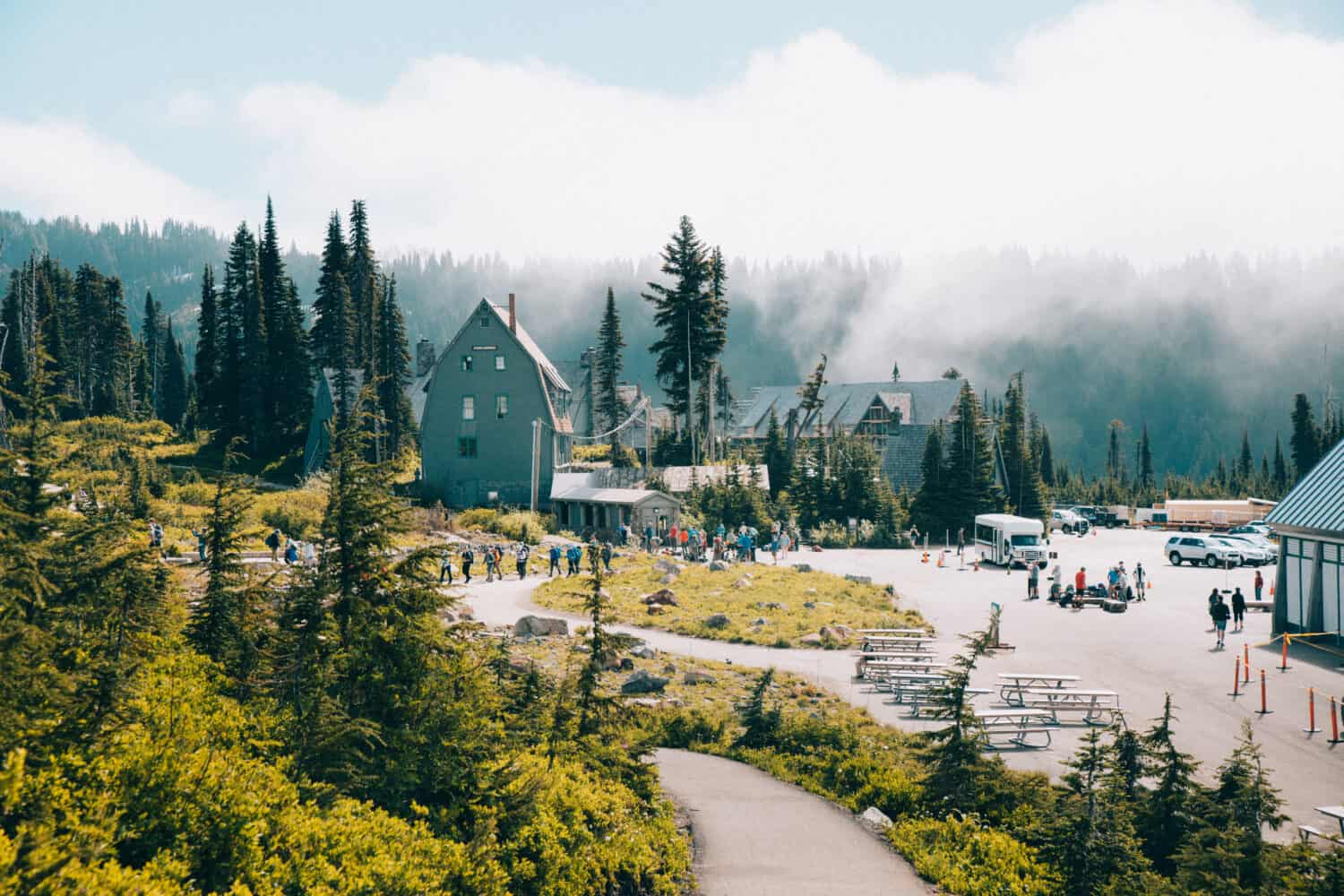
12. Spend Your Morning in Paradise
We mean that both figuratively and literally!
One of the most popular sections of the park is the Paradise Area, and for good reason!
Within the Paradise Area of Mount Rainier National Park, your guaranteed to see lots of wildflowers, enjoy incredible views of the Tatoosh Range, and hike some of the best trails in the Pacific Northwest!
We suggest hiking the Skyline Trail Loop (moderate, 5.5 miles with 1,450 feet elevation gain) or the Alta Vista Trail (easy, 1.5 miles with 560 feet elevation gain). They have the ultimate views of Mount Rainier and the awe-inspiring scenery surrounding the epic 14er.
13. Wander The Grove of the Patriarchs
The Grove of the Patriarchs is an easy hike in Mount Rainier National Park. It boasts a wonderland of old growth trees, some of which are centuries old!
Exploring the Grove of the Patriarchs is the perfect activity for small children and families. This is because it’s an easy hike and there is no elevation gain.
The most common trees you’ll see in the Grove of the Patriarchs include red cedars, western hemlocks, and Douglas firs. Some of these trees are over 1,000 years old!
Note: The bridge in the Grove of the Patriarchs is currently being repaired – click here for updates.
14. Capture Pictures on the Sourdough Ridge Trail
One of the best views in Mount Rainier National Park is on the Sourdough Ridge Trail near Paradise Inn, Washington.
There are three great ways to experience this area of Mount Rainier: on the Sourdough Ridge Trail (easy/moderate, 2.5 miles), Frozen Lake via Sourdough Ridge Trail (easy, 2.9 miles), or the Mount Fremont Lookout Trail via Sourdough Ridge Trail (moderate, 5.7 miles).
The Sourdough Ridge Trail is a great way to get a lot of stunning views of the area while being very accessible for families or those who want to try something less challenging or intense.
Whether you’ve got an iPhone, film camera, or instant camera, you’ll surely get epic pictures of the PNW while on this hike.
15. Venture out to Pinnacle Peak Trail
Situated in the middle of the Tatoosh Range, the Pinnacle Peak Trail is a fun hike that will give you epic views of Mount Rainier National Park from an elevation of 6,562 feet (the third highest peak in the range!).
The Pinnacle Peak Trail is short, at 2.5 miles, but it’s a very steep trail, with 1,050 feet of elevation gain. Don’t let this scare you though–the views are so worth it!
While hiking on the PInnacle Peak Trail, you’ll see lots of lupine, marmots, and pikas.
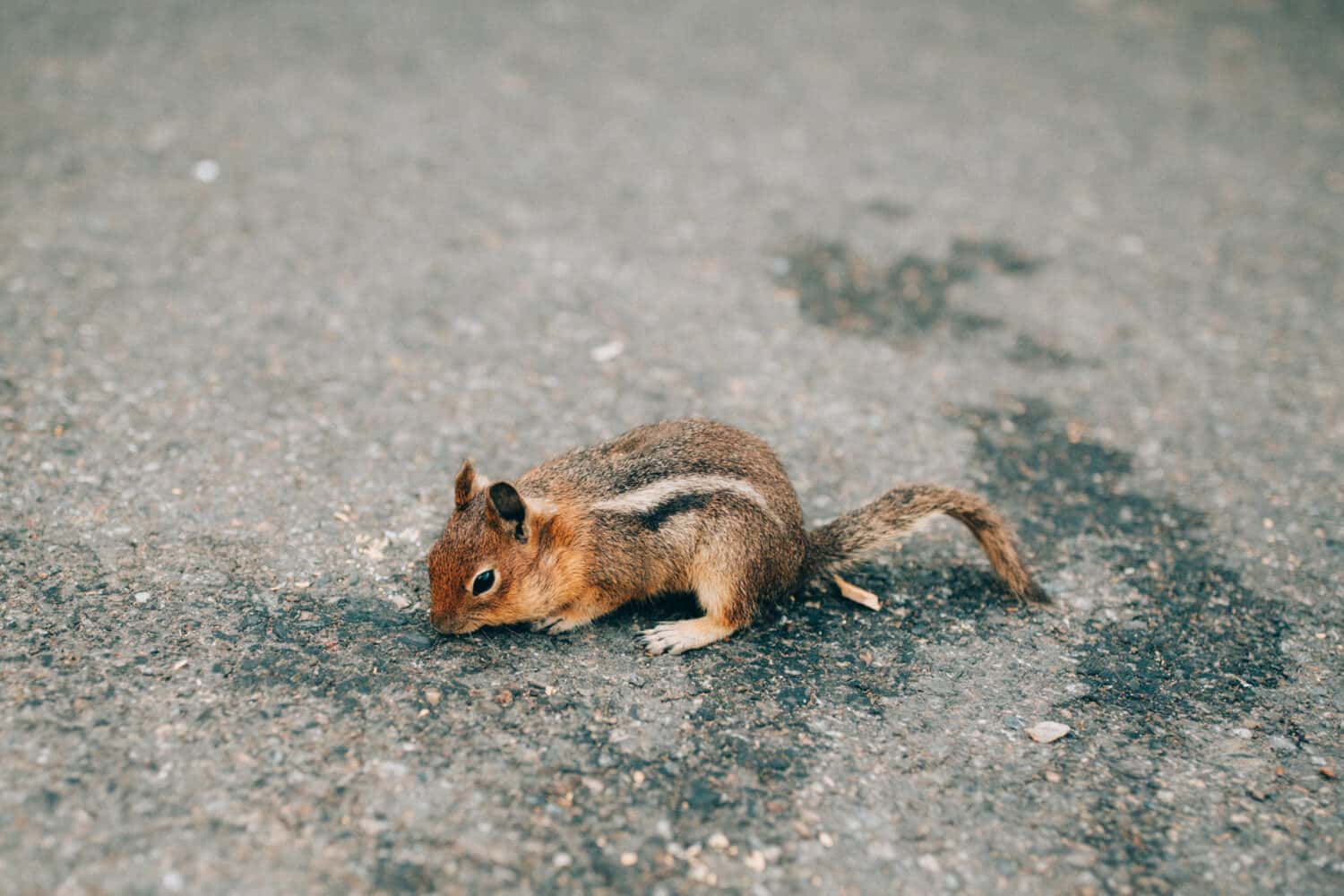
16. Spot Wildlife In The Park
While in the park, be on the lookout for PNW wildlife that call this area home!
Marmots and pikas are some of the most common critters you’ll see in Mount Rainier National Park. However, it’s not uncommon to see deer, mountain goats, elk, fox, coyote, bobcat, and mountain lion.
Birding is another popular activity for visitors at Mount Rainier. It’s likely that you’ll see birds of prey, finches, hummingbirds, bluebirds, and more!
While watching wildlife in the park, be sure to leave them be and not interact with them for both your safety and theirs.
17. Hike To Tolmie Peak Lookout
Hike a moderate 7.5 miles with 1,100 elevation gain to the Tolmie Peak Lookout in Mount Rainier National Park for absolutely epic views of the park!
While hiking to the Tolmie Peak Lookout, you’ll pass through the gorgeous Mowich/Carbon River Area, which includes old growth forests and rainforest vibes. It’s the perfect place to try out forest bathing!
Note: Mosquitos are savage here! Come with bug spray, cover your arms, and consider a hat net to keep them away.
18. Enjoy the Historic Paradise Inn
Built in 1916, the Paradise Inn is a lodge in Mount Rainier National Park with a rich history.
The Paradise Inn truly feels like paradise! It’s situated at an elevation of 5,420 feet, featuring historic architecture, boasting views of the surrounding meadows, and an opportunity to get away from the business of life (no internet for ultimate unplugging).
See it for yourself and stay at the Paradise Inn, starting at $272 per night.
19. Go Stargazing at Night
Mount Rainier National Park is the perfect place for stargazing at night. This is because it’s so secluded from the bustling west side of Washington!
The best time to visit Mount Rainier National Park for stargazing is during the Perseid Meteor Shower, which happens annually between July 17th and August 24th. The peak time to see the Perseids Meteor Shower is August 9-13!
Another epic place to see the Milky Way in Mount Rainier National Park is at the Sunrise Area.
Interested in capturing the night sky? Join National Parks After Dark–a photography group that focuses on nighttime photography of the national parks.
You can also attend the park’s Night Sky Programs in the Paradise area that happen annually, August and beyond, and are great for kids and families!
20. Summit Mount Rainier
Now, this isn’t for the faint of heart. Summiting Mount Rainier takes a lot of training, planning, and execution!
For those up for the challenge of climbing more than 9,000 feet (via any route) to reach the summit of Mount Rainier, check out the guide services in the area or learn all about climbing it on your own here.
The top climbing guide services at Mount Rainier include Alpine Ascents International, International Mountain Guides, LLC, or Rainier Mountaineering Inc.
While the climb up Mount Rainier is difficult, it’s a big accomplishment, and on many PNW native’s bucket lists!
Where to Stay in Mount Rainier National Park
There are four campsites and four inns located WITHIN Mount Rainier National Park. They book out FAST, so if you know you’re camping dates, reserve your sites ASAP.
Mount Rainier Inns:
The National Park Inn in Longmore is a great option for those looking to explore the park and stay close–and it’s open year-round! Rates at the National Park Inn start at $270 per night.
If you’re looking for top-notch views, check out the Paradise Inn in Paradise! Rates at the Paradise Inn start at $272 per night. It can also be one of the most romantic getaways in Washington – especially for outdoorsy couples!
Mount Rainier Campgrounds
Cougar Rock, Mowich Lake, White River, and Ohanapecosh are all available for reservations each year and great places to stay for families or those who are looking for a cheaper option!
Rates at these national park campgrounds start at $20 per night!
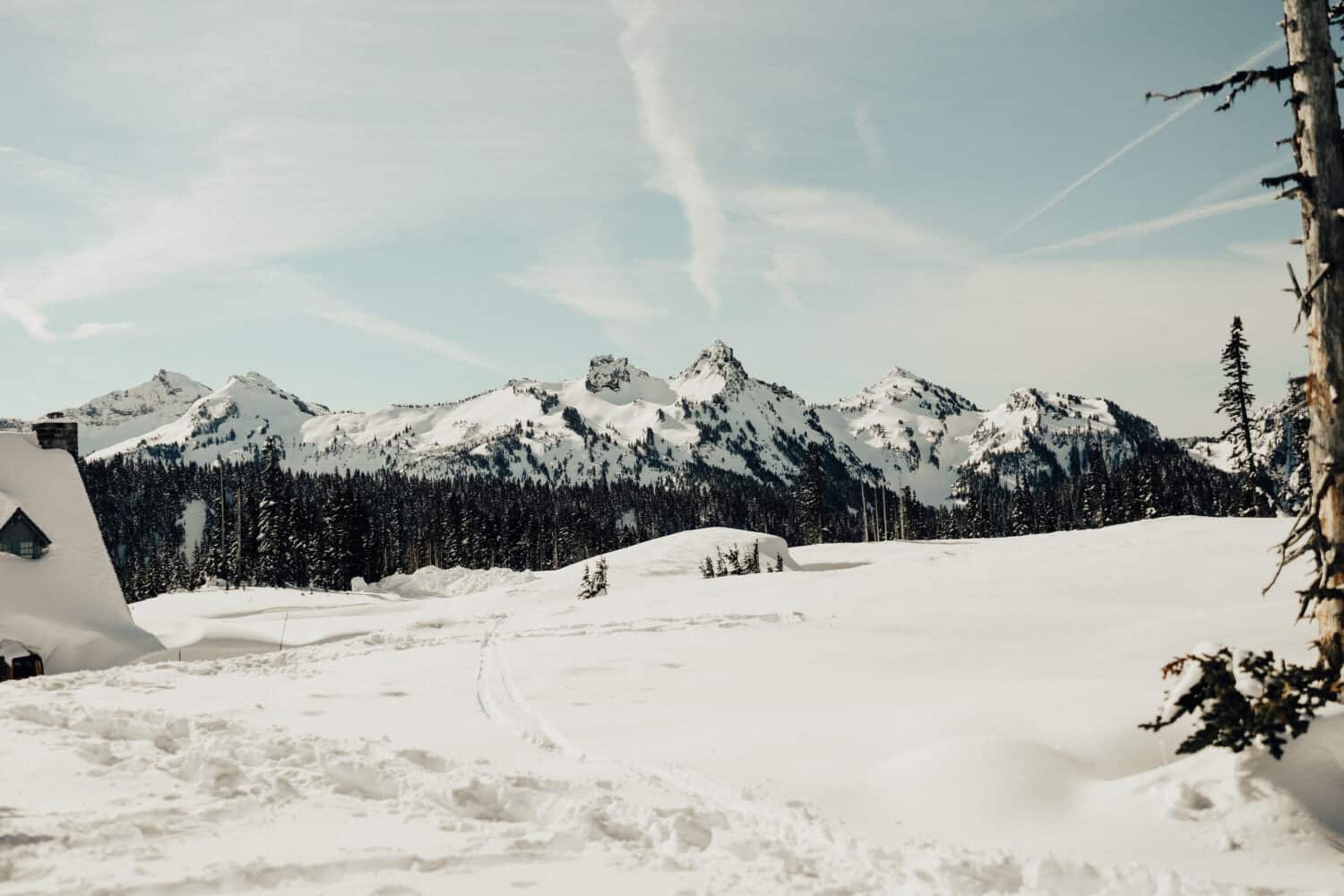
Mount Rainier FAQs
What is Mount Rainier’s Indigenous Name?
There are many indigenous names that have been given to Mount Rainier by Native Americans. These include “Tahoma”, “Takhoma”, and “Ta-co-bet,” some of which translate to ‘mother of all waters.”
It became colloquially known as Mount Rainier in 1792 when Captain George Vancouver renamed the peak after his friend Rear Admiral Peter Rainier.
In 2021, the Puyallup Tribe launched an effort to rename Mount Rainier back to its original name, Mount Tacoma, or Mount Tahoma.
In Twulshootseed–one of the Native languages of the Puyallup Tribe–the mountain is called təqʷuʔməʔ and is pronounced “Taquoma.”
Is Mount Rainier Dangerous?
Visiting Mount Rainier National Park is not generally considered dangerous on day-to-day terms. However, intense mountain weather, volcanic activity, and risky behavior can make the park hazardous to visitors.
Because the mountain is an active volcano, Mount Rainier is technically considered the most dangerous mountain in the Cascades, due to the potential for eruption and risk of major debris flows. Because of this, there are hazards involved with visiting this area.
The good news is that Mount Rainier is very heavily monitored for all kinds of seismic and volcanic activity. It can still be safely enjoyed by visitors. You can check out all kinds of volcanic features and geologic formations throughout the park that are unique to this volcano!
Mount Rainier itself is considered a difficult climb. It can be dangerous when done without the proper gear, knowledge, or guides. The presence of glaciers and large banks of snow also make this trek dangerous without glacier, mountaineering, and avalanche safety training.
Overall, the National Park Service ensures the safety of visitors in many ways. For example: they close certain parts of the park when it’s considered dangerous to visit. However, it’s always important to look after yourself and take the proper precautions when visiting the backcountry–especially during winter in Washington!
Want to get spooked for real? Discover the most haunted places in Washington, and dare trek some of the most haunted hikes in the Pacific Northwest!
How Tall is Mount Rainier?
Mount Rainier and its sub-peak, Liberty Cap, are the only 14ers in Washington State and stand proudly at 14,411 feet tall!
What makes Mount Rainier unique is that while it’s a part of the Cascade Mountain Range, it’s also fairly isolated, making the height from sea level more dramatic and impressive.
Is Mount Rainier National Park worth visiting?
Yes! Mount Rainier National Park is definitely worth visiting.
There is so much to do in Mount Rainier National Park that is accessible to all outdoor adventurers. This including families, seniors, kids, and people of all abilities!
Within the park, you can camp, hike, climb, walk, stargaze, stay in a lodge, photograph the wilderness…the list goes on!
How Many Glaciers are on Mount Rainier?
There are 25 glaciers on Mount Rainier–that’s the most on any mountain in the United States!
Emmons Glacier on Mount Rainier covers the largest area of any glacier in the contiguous 48 states. It stretches over 4 miles!
Is Mount Rainier National Park Dog-Friendly?
To protect the fragile environment, dogs (or any other pets) are not allowed within the borders of the park.
However, service animals are welcome within Mount Rainier National Park.
Learn more about traveling with pets in national parks here.
The Best Things To Do At Mount Rainier National Park (Overview)
To wrap things up, here are the best things to do at Mount Rainier National Park!
1. Wander The Easy Nisqually Vista Loop
2. Capture the Sunrise at Reflection Lakes
3. Explore the White River (Sunrise) Area
4. Hike To Mt. Fremont Lookout Tower
5. Wake up for Sunrise…at Sunrise!
6. Take The Skyline Trail Hike
7. Find Mount Rainier Waterfalls
8. Have a Picnic at Tipsoo Lake
9. Learn About History at Longmire
10. See The Wildflowers During Peak Season
11. Hike the Wonderland Trail
12. Wander The Grove of the Patriarchs
13. Capture Pictures on the Sourdough Ridge Trail
14. Venture out to Pinnacle Peak Trail
15. Spend Your Morning in Paradise
16. Spot Wildlife In The Park
17. Hike To Tolmie Peak Lookout
18. Enjoy the Historic Paradise Inn
19. Go Stargazing at Night
20. Summit Mount Rainier
What are some of YOUR favorite things to do in Mount Rainier National Park? Tell us in the comments!
More PNW Adventures
The 15+ Best Places To Live In The Pacific Northwest
The 16 Best Pacific Northwest Podcasts To Listen To On Your Next Road Trip
Things To Do In North Cascades National Park
31 Impressive and Fun Facts About Washington State
How To Plan A Trip To The Pacific Northwest
The 30 Most Epic Things To Do In Washington State
101 Bucket List Things To Do In The Pacific Northwest
